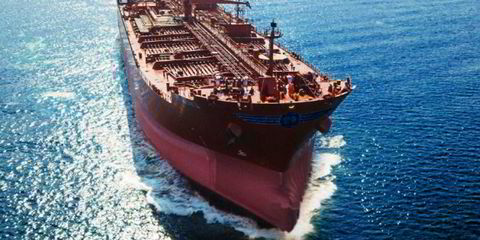And in a week in which it takes delivery of the first of its giant triple-e vessels, the owner is mulling upgrades to its previous round of titans – the e class which includes the 15,000-teu Emma Maersk (built 2006).
Signe Bruun Jensen, global environment advisor at Maersk Group,told TradeWinds: “We measure the performance of all of our vessels and we were able to see over a number of years Maersk Line vessels were able to perform significantly better than the chartered fleet.”
She says the upgraded ships have been installed with a variety of different technologies the Danish owner had previously had good experience with on its own ships.
“When we talk about our carbon performance for instance, we report for the entire fleet. So in order to bring that down the initial challenge was on our own fleet. And now we have done that and seen the results, the next step is to look at the chartered fleet,” Jensen explained following a Sustainable Shipping Initiative briefing in London today.
She says Maersk was willing to meet the costs of upgrading the chartered ships as "a lot of the time the payback is within 12 months". How many more will receive the same treatment has not been decided.

“There are split incentives on the chartered ships, but as we move toward building longer term relationships with our charter partners we are starting to see more obvious business cases for performing the retrofits,” Jensen said.
The 18,000-teu Maersk McKinney Moller, named after the great shipowner will enter service in the coming days as the first of 20 triple-es constructed at DSME in Korea.
It will emit 50% less carbon dioxide than the industry average on the Asia Europe route today.
It has been hailed by JP Morgan as one of the most important events in shipping history as it implies the start of cost saving competition and increasing importance of shipbuilding skill.
Sokje Lee, an analyst for JP Morgan, says the Maersk McKinney Moller is only three meters longer and four meters wider than the Emma Maersk. But it carries around 18% more cargo and will enjoy over 20% fuel cost saving per TEU, the analyst explains.
Jensen says the comparative performance between the triple-es and the e class vessels is not, in itself, the driving force behind the potential retrofits.
“The pace of change is so rapid, we are looking at a number of projects on the e class vessels,” she said. “There is technology out there which means there are significant gains to be found.”
Jensen added: “If you look at the market situation over the last 10 years we have not made sufficient returns for our investors. Anywhere you can save on fuel costs is a big priority for us.”




